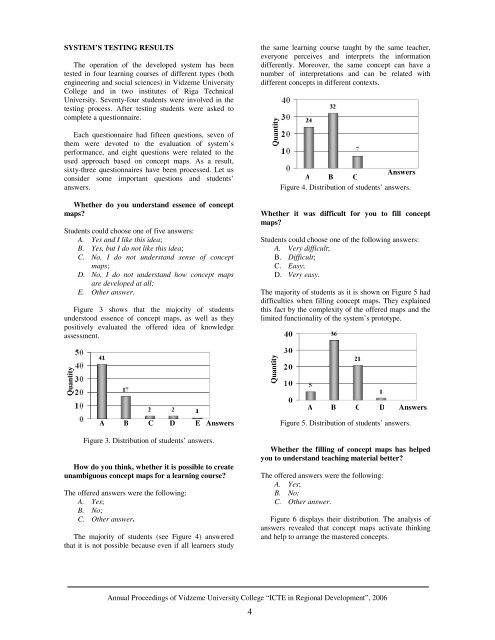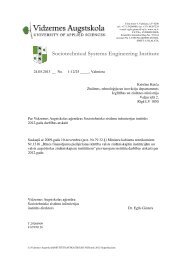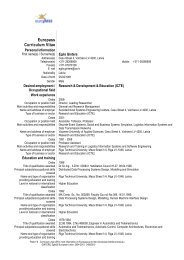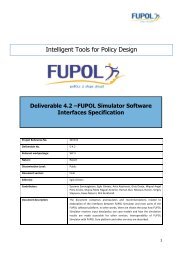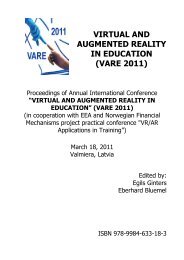Proceedings in pdf format. - Sociotechnical Systems Engineering ...
Proceedings in pdf format. - Sociotechnical Systems Engineering ...
Proceedings in pdf format. - Sociotechnical Systems Engineering ...
Create successful ePaper yourself
Turn your PDF publications into a flip-book with our unique Google optimized e-Paper software.
SYSTEM’S TESTING RESULTSThe operation of the developed system has beentested <strong>in</strong> four learn<strong>in</strong>g courses of different types (botheng<strong>in</strong>eer<strong>in</strong>g and social sciences) <strong>in</strong> Vidzeme UniversityCollege and <strong>in</strong> two <strong>in</strong>stitutes of Riga TechnicalUniversity. Seventy-four students were <strong>in</strong>volved <strong>in</strong> thetest<strong>in</strong>g process. After test<strong>in</strong>g students were asked tocomplete a questionnaire.Each questionnaire had fifteen questions, seven ofthem were devoted to the evaluation of system’sperformance, and eight questions were related to theused approach based on concept maps. As a result,sixty-three questionnaires have been processed. Let usconsider some important questions and students’answers.Whether do you understand essence of conceptmaps?Students could choose one of five answers:A. Yes and I like this idea;B. Yes, but I do not like this idea;C. No, I do not understand sense of conceptmaps;D. No, I do not understand how concept mapsare developed at all;E. Other answer.Figure 3 shows that the majority of studentsunderstood essence of concept maps, as well as theypositively evaluated the offered idea of knowledgeassessment.the same learn<strong>in</strong>g course taught by the same teacher,everyone perceives and <strong>in</strong>terprets the <strong>in</strong><strong>format</strong>iondifferently. Moreover, the same concept can have anumber of <strong>in</strong>terpretations and can be related withdifferent concepts <strong>in</strong> different contexts.QuantityAnswersA B CFigure 4. Distribution of students’ answers.Whether it was difficult for you to fill conceptmaps?Students could choose one of the follow<strong>in</strong>g answers:A. Very difficult;B. Difficult;C. Easy;D. Very easy.The majority of students as it is shown on Figure 5 haddifficulties when fill<strong>in</strong>g concept maps. They expla<strong>in</strong>edthis fact by the complexity of the offered maps and thelimited functionality of the system’s prototype.QuantityQuantityA B C DAnswersA B C D EAnswersFigure 5. Distribution of students’ answers.Figure 3. Distribution of students’ answers.How do you th<strong>in</strong>k, whether it is possible to createunambiguous concept maps for a learn<strong>in</strong>g course?The offered answers were the follow<strong>in</strong>g:A. Yes;B. No;C. Other answer.The majority of students (see Figure 4) answeredthat it is not possible because even if all learners studyWhether the fill<strong>in</strong>g of concept maps has helpedyou to understand teach<strong>in</strong>g material better?The offered answers were the follow<strong>in</strong>g:A. Yes;B. No;C. Other answer.Figure 6 displays their distribution. The analysis ofanswers revealed that concept maps activate th<strong>in</strong>k<strong>in</strong>gand help to arrange the mastered concepts.Annual <strong>Proceed<strong>in</strong>gs</strong> of Vidzeme University College “ICTE <strong>in</strong> Regional Development”, 20064


